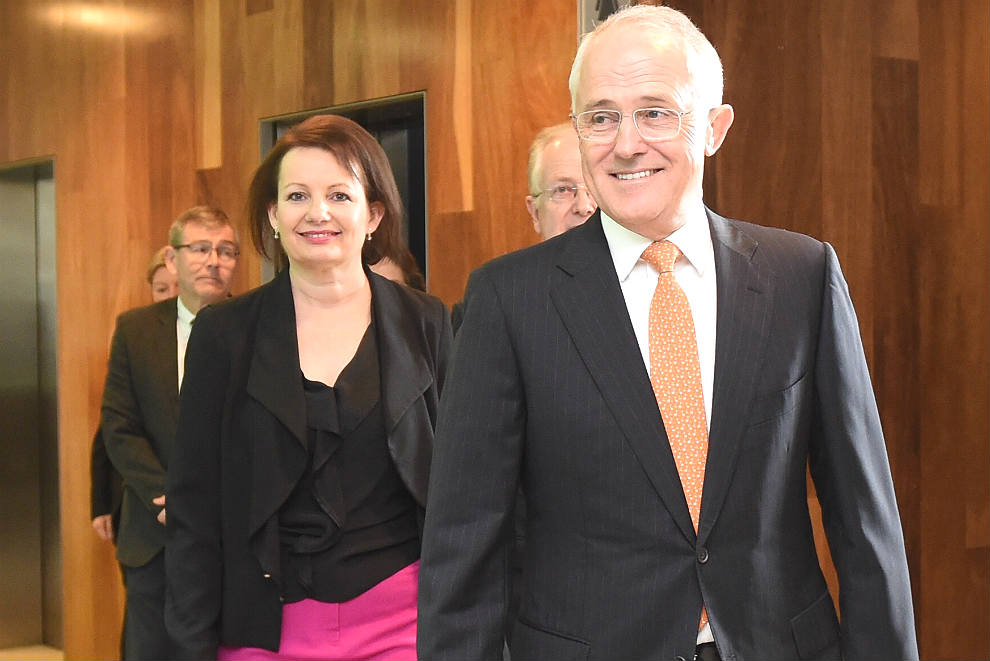Earlier this week a diverse panel of healthcare stakeholders – including medical professionals, academics and consumer representatives – released a report spelling out how a “patient-centred health care home” model, or PCHCH, should develop in Australia. The “home” in this case is a healthcare practice of primary care providers (usually headed by GPs), and the aim is to provide care that is patient-centred, team-based, comprehensive, and coordinated. These characteristics are what we all want; they are especially important for people with complex medical problems.
The panel was responding to sketchy details the Turnbull government has released in recent months about its Health Care Homes plan, which was originally proposed in a report by its own Primary Health Care Advisory Group in December last year. That group had been asked to examine opportunities for better management of people with complex and chronic diseases, and had put forward just one option: an Australian version of the PCHCH scheme operating in the United States. (It’s not clear whether the group was asked to focus on this option and, if so, why use wasn’t made of earlier work on such a proposal commissioned by the Department of Health when Tanya Plibersek was health minister.)
Reflecting the push for change, the April meeting of the Council of Australian Governments, or COAG, coupled an increased federal government focus on primary care services with extra funding for hospitals as a way of preventing unnecessary hospitalisations for people with complex and chronic diseases. The accompanying heads of agreement contained the first mention of Health Care Homes, providing details of a pilot program that would begin in July 2017 and run for three years. A contemporaneous media release from the prime minister and the health minister made the broad details public.
In May, the initiative was funded to the tune of $21.3 million in the 2016–17 budget, but no further details were released. Although the proposal was positively received, important questions remained about how the model (or models) would be developed, implemented, funded, evaluated, adjusted and expanded. Those questions are still unanswered. What we do know is that whatever the federal health department has in mind has been developed with minimal public consultation. The timelines for the pilot are unreasonably short, and the process of getting stakeholders involved is now urgent.
It’s this sequence of events that drove the panel to hold its roundtable in early July and produce this week’s report. Clear definitions and goals will be essential if we are to know whether this new model of care is working, and perhaps the most important thing the panel did was to define the core elements of an Australian PCHCH. This model of care is already operating elsewhere, especially in the United States, but the approach must be adapted to Australian needs.
The roundtable saw the key elements as:
- patient-focused care with patients as informed and active partners,
- comprehensive multi-disciplinary team-based care,
- coordination of care across the care delivery system,
- accessibility for patients using multiple communication modes,
- evidence-based care and data-driven quality improvement,
- payment models that support all of these elements.
Given that none of these elements exists comprehensively at the moment, the task of transforming general practices to PCHCHs will be significant. New infrastructure and improved e-health services are needed, as are additional staff with better training and skills in multidisciplinary care, increased patient and community involvement, and new Medicare payment mechanisms. The model/s to be tested should be sufficiently flexible to meet local needs, and increased resources will be needed in underserved areas.
The size of the task is greater than the federal government might imagine because the panel made important recommendations about the scope of the scheme. It recommended that PCHCH should be available to all Australians, not just those with chronic and complex conditions. This is sensible: it makes no sense for practices to wait until patients are really sick before offering them the best model of care.
The panel also highlighted the need to go beyond simply providing clinical services, and to ensure that patients have access to the social determinants of health: safe housing, good nutrition, home-based care as needed, transport and social interactions. And it argued that PCHCHs should be embedded in the local healthcare systems, with strong links to the Primary Health Networks and hospitals.
Delivering this new model of care will require fundamental changes. PCHCHs are not just general practices with add-ons. The two biggest barriers are likely to be finding a payment system that works and is acceptable to providers, and driving the necessary changes in culture.
The roundtable panel argued that a new payment system must reward quality, comprehensiveness and continuity of care, respond to context, and safeguard against cost-shifting and other perverse incentives such as under-treatment and “cherry picking” patients. Regrettably, it didn’t take the next step and outline the details of such a scheme. While there is a willingness on the part of medical professionals to look beyond fee-for-service, in reality there will be many challenges and barriers – and there are no great success stories to draw on from earlier Australian trials or from overseas.
All of which highlights how important cultural change will be. Partly, it will be a matter of developing a common language that is relevant to patients. Innovative leaders in the clinical world and the community must be used to be exemplars and advocates, and the government will need to invest additional resources to assist those areas where there are low levels of change readiness.
The panel’s report did not address a number of areas where more work will be needed. These include:
Encouraging enrolment: The government’s original proposal was to allow voluntary enrolment in a Health Care Home. To achieve the goals of coordinated and continuous care, though, there needs to be a formal doctor–patient relationship. This could be achieved by giving patients incentives to enrol rather than making it compulsory.
Outlining the full range of services to be provided, and dealing with out-of-pocket costs: If the focus of the PCHCH is to be on the whole patient, then integrating mental health and substance-abuse services is essential. Other needed services include pharmacy, dental, eye and hearing and a range of allied health care. These need not be co-located, but must be readily accessible and affordable. The roundtable report doesn’t mention the need to link in community-based specialist services, and it fails to address the consequences for the effective implementation of the PCHCH model if patients’ out-of-pocket costs for primary and specialist care continue to grow at the current rate.
Working with the wider health and social welfare system: The panel recognises the need to provide these services but doesn’t detail how this could be facilitated. One approach is to use Community Health Workers: these frontline public health workers have a close understanding of the communities in which they work and generally share the language and culture. Because they have trust and relationships, they can act as advocates and intermediaries between health and social services and the community to facilitate access to services and improve the quality and cultural competence of service delivery.
Learning from Aboriginal Community Controlled Health Organisations: ACCHOs have very successfully looked beyond the biomedical approach to health and reduced cultural and financial barriers to primary care. We should not ignore local examples of what works but rather look to implement them more widely.
Building the take-up of evidence-based models: A commitment to the continued development and implementation of the PCHCH model beyond the three-year pilot is essential. What is needed is an embedded commitment to innovation and a culture of continuous improvement, rather than the stop-start approach of a limited pilot program.
Using data effectively and measuring success: The Australian healthcare system is notorious for collecting data and failing to use it to maximum effect. In designing the PCHCH model/s it will be imperative to have agreement on the most appropriate performance indicators. The data can then measure improved patient outcomes, indicate where efforts should be targeted, and benchmark quality and safety. This information can be fed back into the system at all levels.
Meeting reasonable expectations about funding and the time needed to deliver results: The roundtable didn’t comment on the government’s unrealistic funding and timing expectations. Even given the limited scope of the proposed trial (65,000 patients in 200 practices), $21 million over four years is minimal. A draft version of the COAG agreement, which doesn’t appear to be publicly available, stated that the Commonwealth would keep back $70 million annually for efforts to reduce avoidable hospitalisations and improve quality and safety, and intimated that the states and territories and private health insurers would also make contributions. This has not been further discussed, however.
The federal government expects to have an evaluation of the PCHCH pilot available to inform the next agreement on public hospital funding in 2018. That’s far too soon for any meaningful results. Done well, this is a more expensive model of primary care and the investment will be returned through reductions in costs in other sectors, especially in acute care. Moreover, the American experience shows that changes in outcomes and savings in costs will take time.
While it is essential that this initiative has a solid and evidential foundation, there is no need to start this work anew – and clearly no time to waste. The foundations have been laid by the roundtable report, by the work of the Primary Health Care Advisory Group, by the Royal Australian College of General Practitioners and other groups, and, as far back as 2009, by the National Health and Hospital Reform Commission. The health department’s archives contain other relevant papers, some of them specifically commissioned on this topic.
It’s time for engaged leadership at the top and enthusiastic healthcare workers at the coalface to get started on this much-needed project to transform Australian healthcare. •




